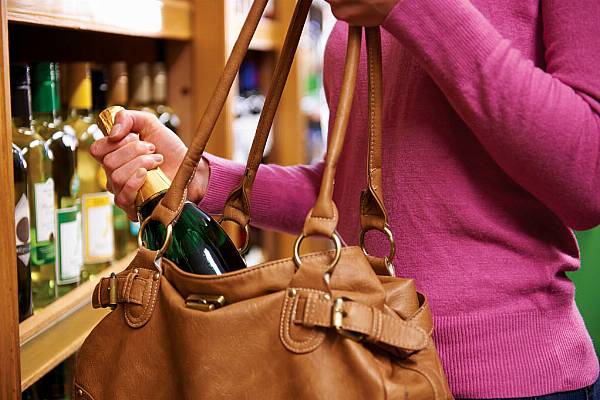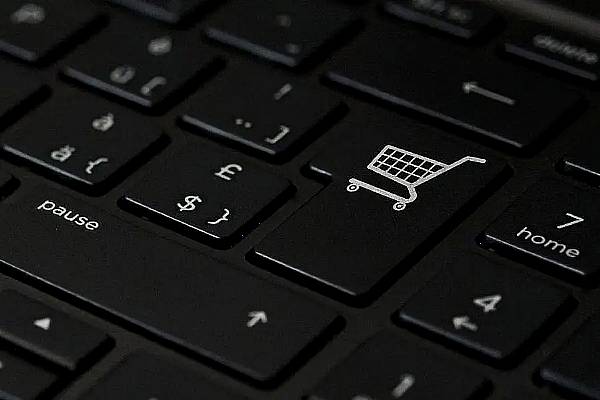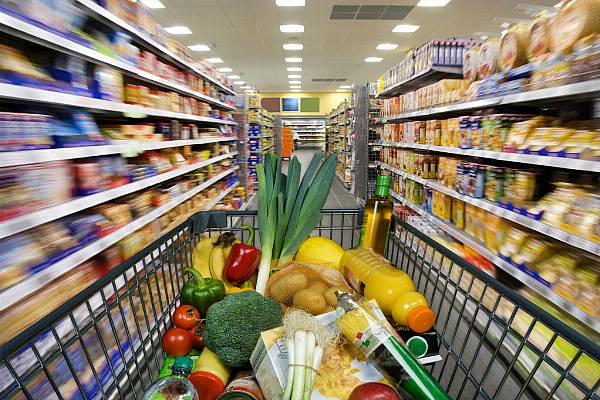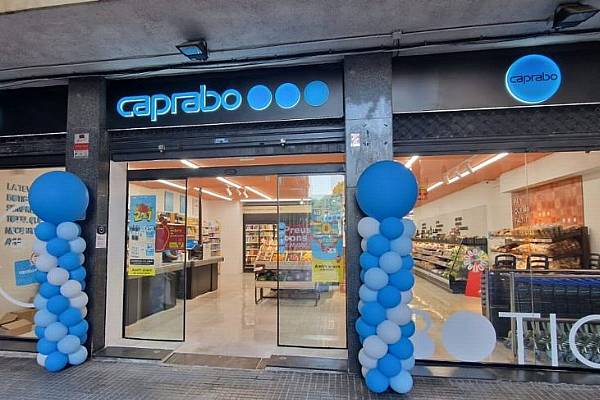Simon Roughneen explores why shrinkage is on the rise in the grocery retail space, and what retailers are doing about it. This article first appeared in ESM’s January/February 2024 edition.
The notion of supermarket staff wearing body cameras is something that retailers and shoppers might have to get used to.
Lidl announced in November that it would be rolling out wearable cameras across its UK outlets, as part of an effort to curb one of the main causes of retail shrink, or shrinkage: shoplifting.
In a statement explaining the move, Lidl GB chief executive Ryan McDonnell said, “While our stores are typically safe environments, retail crime is something that is impacting the whole industry.”
Elsewhere, in a media call to follow its Christmas trading announcement, Tesco chief executive Ken Murphy noted that shrinkage – in particular, theft – has been on the increase, and that the retailer’s “principal concern is making sure our colleagues stay safe”. This includes the roll-out of body cameras, extra CCTV, and extra security staff members, Murphy added, noting that the retailer is “keen for more government support to make sure that our colleagues feel safe. That’s something that we’ll continue to advocate for.”
There are plenty of indications that retailers are taking the matter more seriously, with some “now referring more boldly to retail theft in their financial statements and reporting,” according to Paida Mugudubi, head of retail insights, EMEA and APAC, at Kantar, and colleague Dave Marcotte, senior vice-president of global retail.
A Slippery Subject
Getting to grips with shrink, or shrinkage, is tricky. Not only is the term nebulous, it appears to be obscure, to some – one international retail association even asked this correspondent to explain how to define it.
To those in the know, however, markdowns, errors on paper and food-spoiling are factored in, as is the inevitably of at least some shrinkage. Others focus on losses related to theft, be that by customers or light-fingered employees.
“Shrink is a very slippery word. It means lots of things to different people,” said Colin Peacock, group strategic co-ordinator at ECR Retail Loss, which has come up with a framing called Total Retail Loss, to try to better capture what shrink, or shrinkage, entails.
To the Kantar team, shrink comes down to a range of factors: customer theft and shoplifting, organised retail crime, employee theft, supplier warehouse theft, and processing/operational errors.
Big Numbers
However you define it, most people in the industry agree that shrinkage is a growing problem. In an August 2023 report, ECR Retail Loss noted that it had increased by 33% in the UK since before the COVID pandemic. Later in the year, the British Retail Consortium (BRC) put retail theft losses for the 12 months to April at over £950 million (€1.1 billion).
The problem is not only growing, it is Europe-wide – even global. In 2022, retailers in the United States lost an estimated $110 billion (€100.45 billion) – about the same as Kenya’s 2021 gross domestic product – to shrinkage, according to the National Retail Federation.
“These issues are happening in Australia, Europe, America, and, of course, in the UK,” said ECR’s Peacock.
Whatever the losses have been – and some aspects of shrinkage are estimates – ‘[they’re] big numbers,’ noted Adrian Beck, emeritus professor at the University of Leicester and academic advisor to the ECR Retail Loss board, in the August report.
So, what has caused this surge?
“There are various possible factors as to why levels of shoplifting have increased over the past decade – a general uptick in crime, more incidents being recorded, a lack of police attendance to incidents, and a lack of prosecutions,” said Graham Wynn, assistant director of regulatory affairs at the BRC.
It’s a similar story elsewhere.
“Prosecution rates for shoplifting across Europe are very low, and if penalties are given to offenders, they are usually not hefty,” said Kantar’s Mugudubi and Marcotte, and while “the lion’s share” of theft is done by individual shoplifters, gangs carrying out raids and taking large quantities of items can be a bigger concern for retailers.
According to ECR, ‘violent criminal gangs’ go after retailers, as they see them as soft touches – that the effort offers ‘low risk for high reward’. Internal theft and collusion involving employees is another major concern.
A lack of deterrence might not fully explain why more people are stealing, or why people are stealing more, whichever – or both – it may be.
The Pricing Effect
For the individual who slips a block of cheese or bottle of perfume into his or her jacket pocket or handbag, it likely has something to do with the wallet-emptying consumer price inflation felt across Europe since at least mid-2021. Prices surged again in the wake of Russia’s February 2022 invasion of Ukraine – a war pitting a key source of energy and food commodities against a rival supplier of grains.
According to the ECR, ‘adverse economic conditions and inflation’ have been ‘leading some to steal everyday items’.
The corollary should be that, as inflation eases – and if real wages stop contracting – people should be less inclined to steal, and there has, in recent months, been some good news – at least on base prices.
In early January, the Food and Agriculture Organization (FAO) noted that its December Food Price Index went down by 1.5%, month on month, and by 10.1% on December 2022.
‘For 2023 as a whole, the index was 13.7% lower than the average value over the preceding year, with only the international sugar price index higher over the period,’ the UN organisation noted.
The index tracks the price of food commodities over time, and, all other things being equal – with factors such as oil and transport prices being critical – this should filter through to in-store prices, with the speed and extent depending on how much processing goes into whatever final product uses the commodity in question.
That’s not to say that inflation has gone away. In late December, although Eurostat reported a ‘further settling down of global agricultural markets after a period of disruption’, it still noted that olive oil was 73% pricier than it was in late 2022, with potatoes up by 30% and sugar beet up by 44%.
Elsewhere, in September, the European statistics body noted that though the prices of some core food items registered a slower increase than they did earlier in the year, or in 2022, in most cases, they were far higher than they were in 2020.
According to a recent report by BMI, a Fitch Group-owned company, even if ‘inflation moderates to a level where real wage growth in some key consumer markets turns’, there will remain, for the foreseeable future, an ‘elevated but easing inflationary environment’ – which means that ‘residual price sensitivity among consumers’ is likely to persist.
“Despite falls in inflation, an upcoming cut in national insurance rates, and some consumers having more money in their pockets this [past] Christmas [...], the constant drip of economic challenges they’ve faced over the last two years has finally come home to roost,” said Paul Martin, UK head of retail, KPMG.
Retail price wars could help – Aldi and Lidl announced hefty price cuts in early January – but retailers should not pin all their hopes on economic recovery or mass reductions as a means to curb shrinkage.
Doing More?
To be fair, several retailers have stepped up their efforts, including Sainsbury’s requiring customers to scan receipts to exit self-checkouts, which, some industry insiders suggest, facilitates a ‘buy one get one free’ notion of theft. Scanning receipts to exit self-checkout areas is already commonplace in many parts of Europe, including the Netherlands and France.
Elsewhere, UK retailers “invested over £700 million [€813.77 million] into crime prevention last year, implementing measures such as increased security personnel, body-worn cameras, and CCTV,” said the BRC’s Wynn.
In a recent podcast, management consultancy McKinsey pointed to technology as one part of the “art and science” of reducing shrinkage, including “smart cameras that look for any unusual behaviour or malicious intent” and “smart gates that will let you out of the area once you’ve paid”.
While new and better technology could help retailers push on with efforts to curb shrinkage, motivated and well-trained staff members also have a role to play.
“There are interesting technologies coming along,” said Peacock, “but a really good host in a self-checkout can help.
“Perhaps there was too much labour taken out in the first place,” he added, saying that “process and training” can be just as important as those snazzy bits of new technology.














